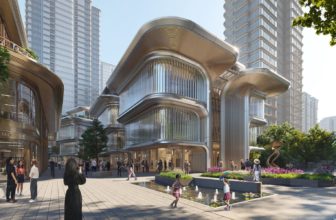New Virtual Reality Tool for Architects to Track User Behavior in a Building
Not a very long time ago, Virtual Reality as we know it was science fiction, but now you and anyone can purchase VR headsets which can be simply used with PCs. The advancement in this field is not merely beneficial for entertainment purposes, but it has, also, shown to be an effective research tool. Now the field of architecture might be approaching a revolutionary step with the use of Virtual Reality to analyze and boost user experience.
3D visualization company InsiteVR has added a new set of tools to their Virtual Reality platform which is dedicated to Architecture, Engineering, and Construction. The new tools go under the name Analytics, and that is, exactly, what they do. “With Analytics, VR walkthroughs can be replayed and analyzed to learn more about user behavior in a space,” explains CEO and Co-founder at InsiteVR, Angel Say. “The heatmap functionality provides additional data on the distribution of users’ attention while going through a virtual representation of the space.”
After users tour the building virtually using a Gear VR, architects can replay and analyze their walkthroughs on the InsiteVR desktop application. The data provided by the new tool set reports all decisions made by users while circulating the space. Avatars are used to represent each user to make it easier to figure out where someone’s behavior started to deviate from the expected, like pausing or taking a different path.
The company used a basketball stadium as an example to showcase its new feature which can be used to test the view from a particular spectator seat and enhance it if needed. The newly launched VR tool can also be used to test the effectiveness of signs and improve wayfinding and circulation experience in hospitals, airports, and public spaces in general.
InsiteVR’s Analytics is still in its testing phase (beta), however, with more experimenting, the tool is expected to be vital for the optimization of built environment. “If we can test and iterate while a building is still pixels we can make the world a more user-friendly place,” says Angel Say on the company’s website.








